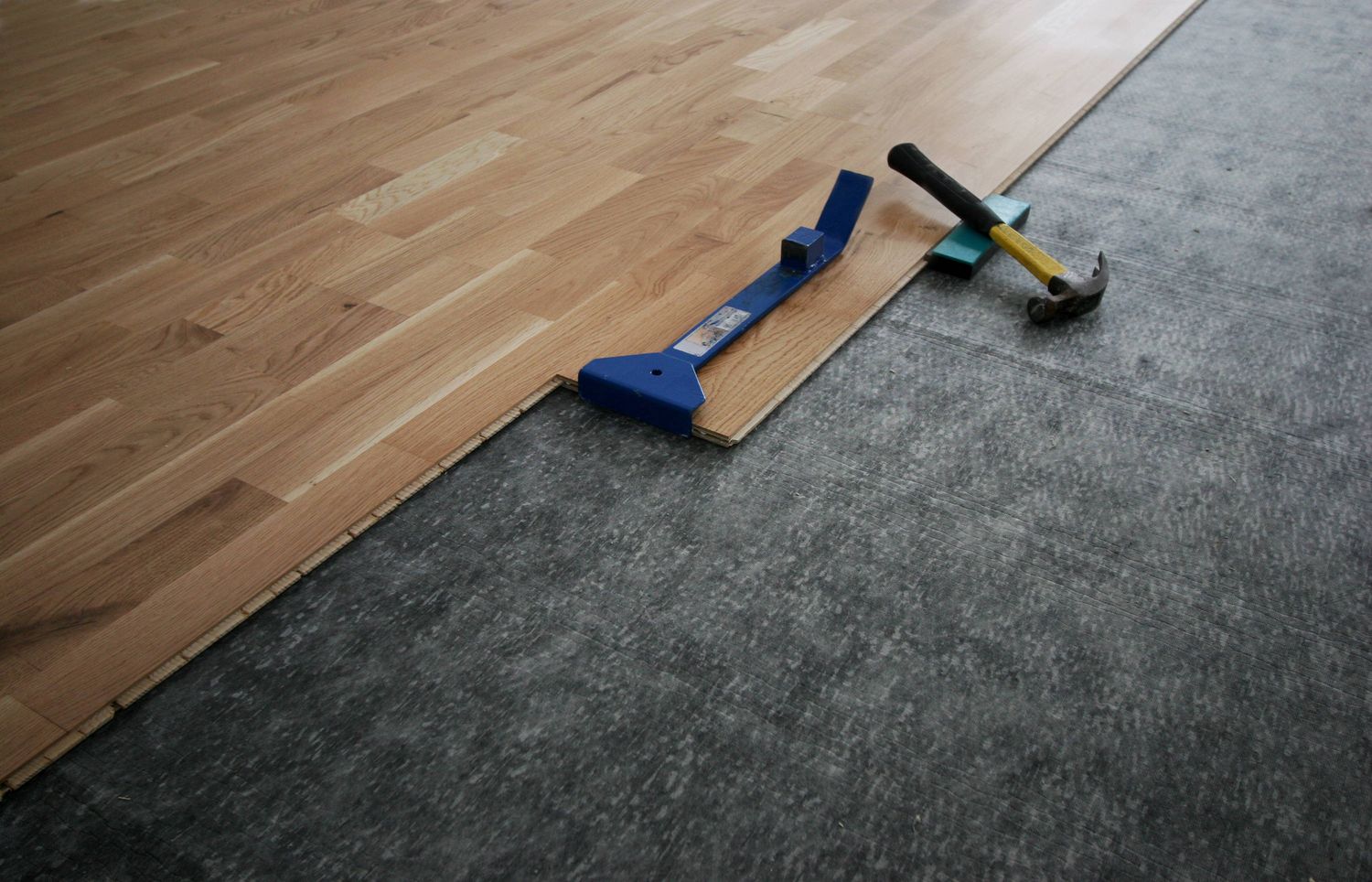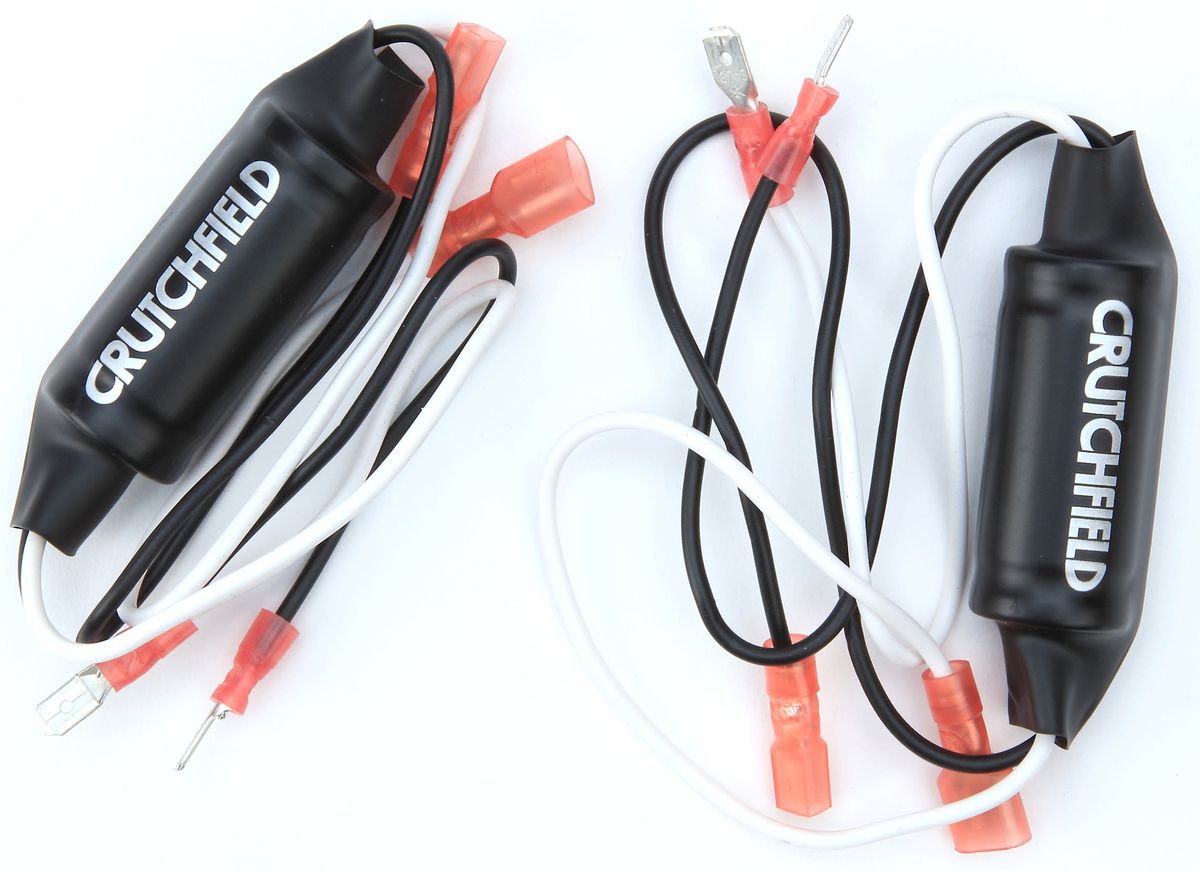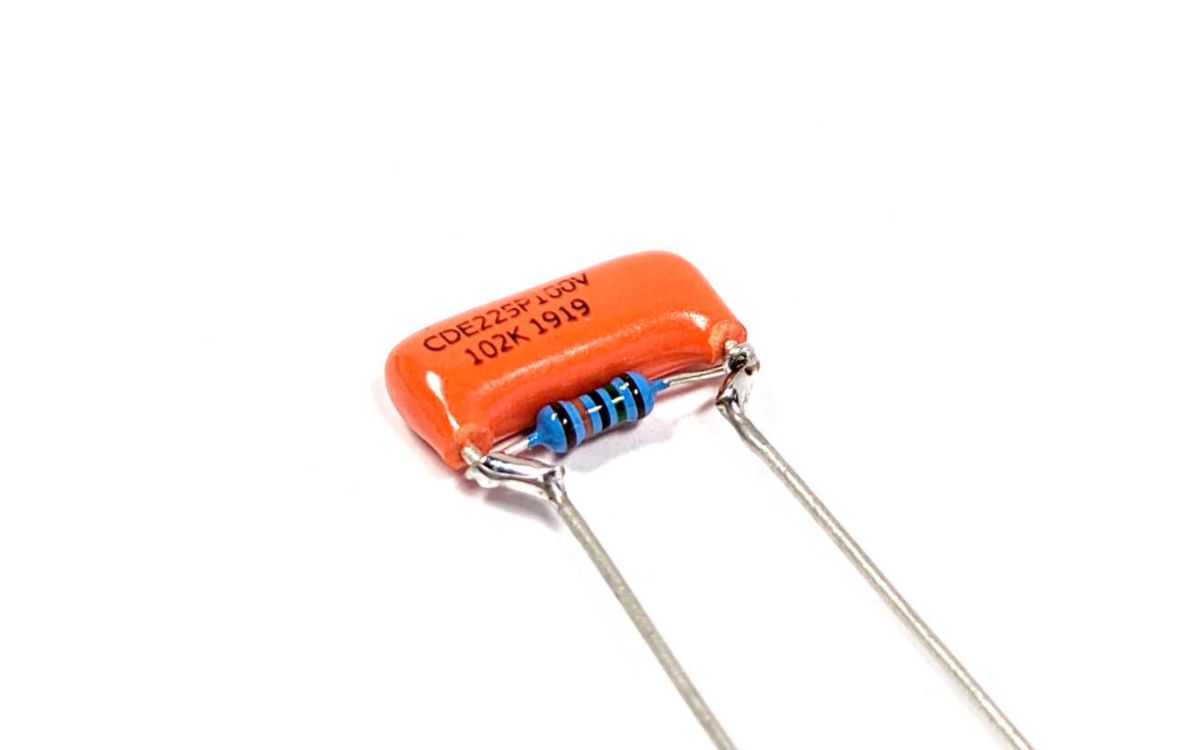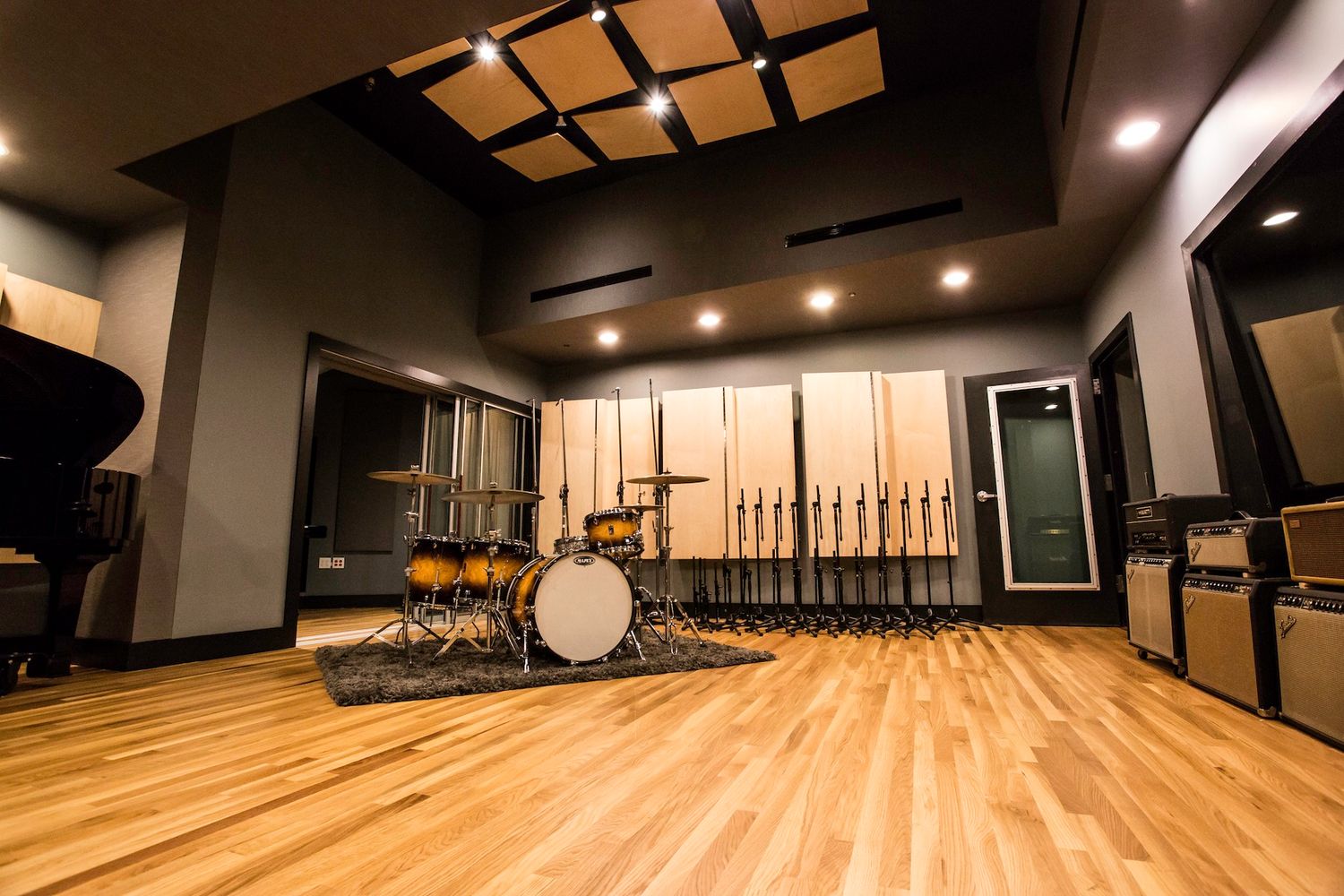Home>Production & Technology>Soundproofing>How To Install Soundproofing On Top Of Carpet


Soundproofing
How To Install Soundproofing On Top Of Carpet
Published: January 27, 2024
Learn how to install soundproofing on top of carpet for a quieter, more peaceful space. Enhance the acoustics and reduce noise with our step-by-step guide.
(Many of the links in this article redirect to a specific reviewed product. Your purchase of these products through affiliate links helps to generate commission for AudioLover.com, at no extra cost. Learn more)
Table of Contents
Introduction
Living in a noisy environment can be extremely frustrating, especially when it comes to your home. Whether you’re dealing with loud neighbors, street traffic, or even the sounds of your own household activities, finding ways to minimize the noise can greatly improve your quality of life. One effective solution is soundproofing.
Soundproofing is the process of reducing or eliminating unwanted sounds by blocking or absorbing them. It helps create a peaceful and quiet environment, allowing you to enjoy restful sleep, concentrate on work, or simply relax without disturbance.
While there are many different soundproofing techniques available, one area that often goes overlooked is the use of soundproofing on top of carpet. Carpets can actually act as a sound absorber to a certain extent, but adding an additional layer of soundproofing can significantly enhance its effectiveness.
In this article, we will guide you through the process of installing soundproofing on top of carpet. Whether you’re dealing with noise from the floor below, footsteps, or airborne sounds, implementing the following steps can help create a more peaceful and tranquil environment within your home.
Materials Needed
Before you start the soundproofing installation process, it’s important to gather all the necessary materials. Here’s a list of items you’ll need:
- Soundproofing underlayment: This is a thick material, such as mass-loaded vinyl or rubber, that helps absorb and block sound.
- Soundproofing panels: These are specially designed acoustic panels that further enhance the soundproofing capabilities of the underlayment.
- Soundproofing adhesive: A strong adhesive that will be used to secure the panels and underlayment to the carpet.
- Measuring tape: To accurately measure the area you’ll be soundproofing.
- Utility knife: For cutting the underlayment and panels to the desired size.
- Tape measure or ruler: To ensure precise cutting and fitting.
- Sealant: A sealant or caulking material to seal the edges of the soundproofing panels and prevent any sound leaks.
- Gloves and safety goggles: To protect your hands and eyes during the installation process.
- Furniture sliders: If you need to move furniture to install the soundproofing, sliders can make the process easier and help prevent damage to your carpet.
Having all the necessary materials ready before you start the installation will help streamline the process and ensure a successful outcome. It’s also important to follow the manufacturer’s instructions for each specific product to achieve optimal soundproofing results.
Step 1: Measure the Area
The first step in installing soundproofing on top of your carpet is to accurately measure the area that you’ll be soundproofing. This will ensure that you have the correct amount of materials and that they fit properly.
Start by measuring the length and width of the room using a tape measure. If the room has irregular shapes or nooks, measure those areas separately. Be sure to account for any furniture or fixtures that will remain in the room, as you’ll need to work around them during the installation process.
Once you have the measurements, calculate the total square footage of the area by multiplying the length by the width. This will give you an estimate of how much soundproofing underlayment and panels you’ll need to purchase. It’s always a good idea to buy slightly more materials than you think you’ll need, as it’s better to have extra than to run out in the middle of the installation.
If you’re working with a large room, it may be beneficial to break it down into smaller sections and measure each section individually. This will help ensure that you have accurate measurements and that you don’t overlook any areas that require soundproofing.
Remember to take note of any areas where the carpet meets walls or doorways, as these will require special attention during the installation process. Taking precise measurements will help you plan the layout and ensure a seamless and effective installation.
Step 2: Prepare the Carpet
Before you can begin installing the soundproofing materials, it’s important to prepare the carpet to ensure a smooth and secure installation. Here’s how to prepare the carpet:
- Thoroughly clean the carpet: Remove any dirt, debris, or dust from the carpet by vacuuming or spot cleaning if necessary. A clean surface will provide better adhesion for the soundproofing materials.
- Move furniture, if needed: If you have any furniture or fixtures in the room, move them to create space for the installation. Use furniture sliders to avoid damaging the carpet or straining yourself while moving heavy items.
- Remove any obstacles: Look for any obstacles on the carpet, such as nails, staples, or loose carpet edges. These obstacles can cause unevenness or damage to the soundproofing materials. Remove them carefully to ensure a smooth and flat surface for installation.
- Repair carpet damage: If you notice any tears, rips, or damage to the carpet, it’s important to repair them before proceeding with the installation. Use carpet repair techniques or seek professional help to fix any issues.
- Allow the carpet to settle: If the carpet has been recently installed or stretched, it may need time to settle. Give it a few days to adjust to the room’s temperature and humidity before installing the soundproofing materials.
By properly preparing the carpet, you create an ideal foundation for the soundproofing materials. This will ensure a secure and long-lasting installation. Taking the time to clean, move furniture, and address any carpet damage will result in a more effective soundproofing solution for your space.
Step 3: Lay Down Soundproofing Underlayment
Now that the carpet is prepared, it’s time to lay down the soundproofing underlayment. The underlayment is a crucial component of the soundproofing system as it helps absorb and block sound vibrations. Follow these steps to properly lay down the underlayment:
- Start at one corner: Begin the installation process at one corner of the room, preferably away from the entrance. This way, you can work your way towards the exit without stepping on the newly-installed underlayment.
- Roll out the underlayment: Unroll the soundproofing underlayment parallel to the longest wall of the room. Allow the underlayment to extend slightly up the walls to ensure full coverage.
- Overlap the seams: If the underlayment comes in rolls, overlap the edges of adjacent rolls by a few inches. This helps create a continuous barrier and prevents sound leaks between the seams.
- Trim the excess: Use a utility knife to trim the underlayment along the walls, ensuring a neat and precise fit. Be careful not to cut into the carpet or the subfloor beneath.
- Secure the edges: If desired, use carpet tacks or double-sided tape to secure the edges of the underlayment. This prevents shifting or bunching up of the underlayment during the installation of the soundproofing panels.
Remember to follow the manufacturer’s guidelines and instructions when it comes to laying down the specific type of soundproofing underlayment you’ve chosen. They may have additional recommendations or steps that are specific to their product.
By properly laying down the soundproofing underlayment, you create a solid foundation for the rest of the soundproofing system. This step is crucial in preventing sound from seeping through the carpet and into the room.
Step 4: Cut and Fit Soundproofing Panels
After laying down the soundproofing underlayment, it’s time to cut and fit the soundproofing panels. These panels are designed to further enhance the soundproofing capabilities of the underlayment. Follow these steps to properly cut and fit the panels:
- Measure and mark the panels: Using a tape measure or ruler, measure the dimensions of the area where you’ll be placing the soundproofing panels. Mark these measurements on the back of the panels using a pencil or marker.
- Cut the panels: Using a utility knife, carefully cut the soundproofing panels along the marked lines. Ensure smooth and straight cuts for a seamless fit.
- Test the fit: Place the cut panels on top of the soundproofing underlayment and check the fit. Make any necessary adjustments, such as trimming the edges or cutting smaller pieces to fit tight corners or irregular shapes.
- Leave gaps for vents or outlets: If there are vents or electrical outlets in the area, cut out corresponding holes or shapes in the soundproofing panels to accommodate them. Ensure a snug fit around these fixtures while maintaining the overall integrity of the soundproofing system.
- Secure the panels: Once you’re satisfied with the fit, use soundproofing adhesive to attach the panels to the underlayment and carpet. Apply the adhesive according to the manufacturer’s instructions, ensuring full coverage for optimal adhesion.
It’s important to note that the number and placement of the soundproofing panels will depend on the level of soundproofing you desire and the specific characteristics of your space. Feel free to experiment with different arrangements to achieve the best results for your needs.
By cutting and fitting the soundproofing panels accurately, you create a barrier that blocks external noise and prevents it from penetrating through the carpet and underlayment, resulting in a quieter and more peaceful environment.
Step 5: Install Soundproofing Adhesive
After cutting and fitting the soundproofing panels, the next step is to install the soundproofing adhesive. This adhesive is essential for securing the panels to the underlayment and carpet, providing a durable and effective soundproofing solution. Follow these steps to properly install the soundproofing adhesive:
- Prepare the adhesive: Read the manufacturer’s instructions on the soundproofing adhesive packaging and prepare it according to their recommendations. This may involve mixing components or simply opening the adhesive tube.
- Apply the adhesive: Using a putty knife or a trowel, spread a thin and even layer of adhesive on the back of a soundproofing panel. Ensure full coverage, especially along the edges and corners.
- Press the panel into place: Carefully position the panel on the underlayment, aligning it with the previously marked area. Apply pressure to firmly press the panel into place, ensuring a strong bond with the underlayment and carpet.
- Repeat the process: Continue applying the adhesive and installing the remaining soundproofing panels, following the same steps. Take your time to ensure proper alignment and a secure fit.
- Clean up excess adhesive: As you work, periodically clean off any excess adhesive that may have squeezed out from between the panels. This will help maintain a clean and professional appearance.
- Allow time for drying: Follow the manufacturer’s instructions for the recommended drying time of the adhesive. Avoid stepping or placing heavy objects on the newly installed soundproofing panels until the adhesive has fully cured.
It’s important to note that different types of soundproofing adhesive may have varying drying times and instructions, so be sure to carefully read and follow the specific product guidelines.
By properly installing the soundproofing adhesive, you ensure that the panels are securely attached to the underlayment and carpet, creating a robust soundproofing barrier that effectively reduces noise transmission.
Step 6: Secure and Seal the Edges
Once you have installed the soundproofing panels with adhesive, it’s essential to secure and seal the edges to maximize the effectiveness of your soundproofing efforts. This step ensures a tight and seamless barrier that prevents sound leaks. Follow these steps to properly secure and seal the edges:
- Trim excess material: If there are any overhanging edges of the soundproofing panels, use a utility knife to carefully trim them, ensuring a clean and neat appearance.
- Apply sealant: Using a sealant or caulking material, apply a bead of sealant along the edges of the soundproofing panels where they meet the walls or doorways. This creates an airtight seal and prevents sound from escaping through small gaps.
- Smooth the sealant: With a finger or a tool, smooth out the sealant to create a clean edge and ensure optimal adhesion. This also helps to blend the sealant with the surrounding surfaces.
- Clean up excess sealant: As you work, periodically clean off any excess sealant that may have smeared onto the soundproofing panels or carpet. Use a damp cloth or sponge to wipe away the excess sealant.
- Allow time for drying: Follow the manufacturer’s instructions for the recommended drying time of the sealant. Avoid touching or disturbing the sealed edges until the sealant has fully cured.
Securing and sealing the edges of the soundproofing panels is crucial in preventing sound leakage and ensuring that your soundproofing system is effective. By taking the time to properly seal the edges, you create a more airtight and efficient barrier against noise.
Step 7: Replace Furniture and Enjoy a Quieter Room
After completing the soundproofing installation process, it’s time to replace the furniture and enjoy the benefits of a quieter room. This final step ensures that your space is not only soundproofed but also functional and comfortable. Here’s what you need to do:
- Carefully move furniture back into place: With the soundproofing materials in position, use furniture sliders or assistance to move the furniture back into the room. Take extra precautions to avoid damaging the newly installed soundproofing panels or the carpet.
- Arrange furniture strategically: Consider the layout of your room and the purpose of each area. Arrange furniture in a way that maximizes the soundproofing benefits. For example, place heavy or upholstered furniture against walls with windows or areas where noise is most likely to penetrate.
- Add soft furnishings: Incorporate additional sound-absorbing elements by adding soft furnishings such as curtains, rugs, and upholstered chairs or sofas. These items help to further reduce sound reflection and create a more peaceful environment.
- Test and evaluate the soundproofing: Once the furniture is in place, take some time to test the effectiveness of your soundproofing efforts. Notice the sound levels in the room and compare them to your previous experiences. Adjust the arrangement of furniture or add more soundproofing materials if necessary.
- Enjoy the peace and quiet: With the soundproofing installation complete, take pleasure in your newly transformed space. Enjoy a peaceful atmosphere that allows for better focus, relaxation, and improved sleep quality.
Remember that the effectiveness of your soundproofing efforts may vary depending on the type and thickness of the soundproofing materials used, as well as the specific characteristics of your space. Experiment with different arrangements and additional soundproofing solutions to achieve the desired level of noise reduction.
By replacing the furniture strategically and making use of soft furnishings, you enhance the soundproofing capabilities of your room and create a comfortable and tranquil environment.
Conclusion
Soundproofing your room is a valuable investment that can greatly improve your quality of life. Adding soundproofing on top of carpet is an effective way to enhance the sound absorption and noise reduction capabilities of your space.
In this article, we have covered the step-by-step process of installing soundproofing on top of carpet. From measuring the area and preparing the carpet to laying down the soundproofing underlayment, cutting and fitting the soundproofing panels, and securing and sealing the edges, each step is essential in creating a successful soundproofing system.
By following these steps and using the right materials, you can significantly reduce unwanted noise and create a more peaceful and tranquil environment within your home. Whether you’re dealing with noisy neighbors, street traffic, or household activities, soundproofing on top of carpet can help minimize disturbances and enhance your overall well-being.
Remember to choose the appropriate soundproofing materials based on your specific needs and consult manufacturer instructions for proper installation techniques. Additionally, don’t forget to consider the layout and arrangement of furniture to maximize the soundproofing benefits in your room.
So go ahead, start soundproofing your room on top of carpet and enjoy the benefits of a quieter and more peaceful living space. Experience better sleep, improved concentration, and a more comfortable environment where you can truly relax and unwind.











